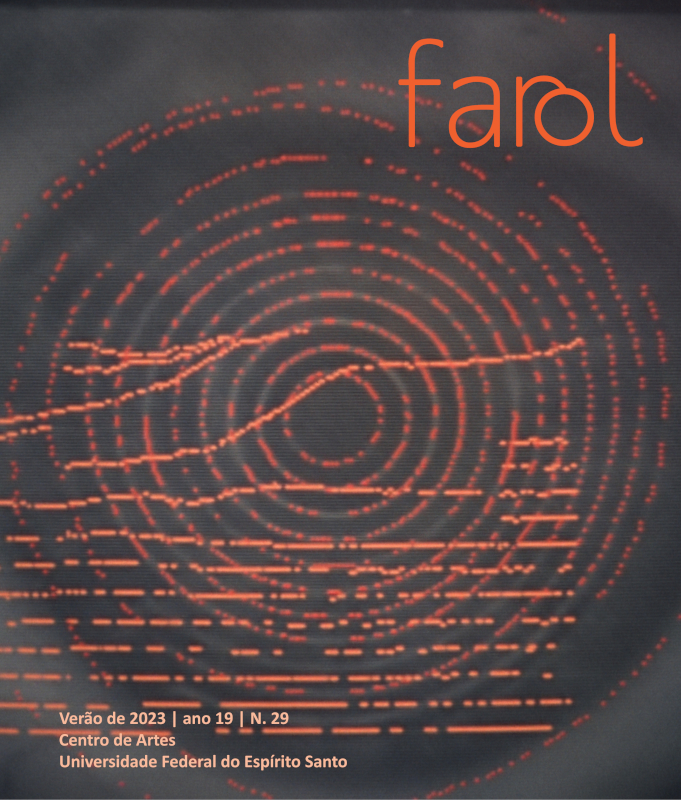The Digital animation as a device for capturing images
The subjective relationship between digital animation and the audiovisual experience in animated documentary
DOI:
https://doi.org/10.47456/rf.v19i29.42917Keywords:
Digital animation., Animated documentary., Visual device., Digital technology., Hybrid cinema.Abstract
The animated documentary, a form of cinema that uses digital animation to tell intimate and engaging stories, has been gaining prominence at film festivals and winning awards. Works such as Flee (2021) by Jonas Rasmussen and Waltz with Bashir (2008) by Ari Folman exemplify this recent trend, exploring personal stories and remarkable events through animation. These films are just a few examples of how animated documentaries are redefining the contemporary audiovisual scene, mixing two languages that until then didn't seem to communicate very well and stimulating reflections on the concepts of documentary and animation in relation to the representation of reality.
Downloads
References
Bernadet, Jean – Claude. Cineastas e Imagens do Povo. São Paulo: Companhia das Letras, 2003.
Carroll, Noël. Philosophical Problems of Classical Film Theory. Princeton : Princeton University Press, 1988.
Carroll, Noël. Ficção, não-ficção e o cinema da asserção pressuposta: uma análise conceitual. In: RAMOS, Fernão Pessoa (org.). Teoria contemporânea do cinema: documentário e narratividade ficcional. v. II. São Paulo: Senac, 2005. p. 69-104.
Deleuze, Gilles. Diferença e repetição. 2. ed. Rio de Janeiro: Graal, 2006.
Flee. Direção de Jonas Poher Rasmussen. Dinamarca: Neon Participant, 2021.
Flusser, Villém. O universo das imagens técnicas: elogio da superficialidade. São Paulo: Annablume, 2008.
Grodal, Torben. Aesthetics and Psychology of Animated Films. In : UHRIG, Meike. 1. ed. Nova York : Routledge, 2018, p. 107- 121.
Lemos, André. Arte eletrônica e cibercultura. Revista Famecos, vol. 4, no 6, 2008, p. 21-31.
Lévy, Pierre. O que é virtual? Trad. Paulo Neves. São Paulo: Ed. 34, 1996, p. 157.
Lyra, Carla Elizabeth Pereira; Capellato, Igor Alexandre. A Poética Estética da Memória em Valsa com Bashir. In sessões do imaginário. Vol 22, n 38, Porto alegre, 2017, p. 161-168.
Manovich, Lev. Abstraction and complexity. Tradução de: PAULA, Silas José de. Abstração e complexidade. Passagens: Revista do Programa de Pós-graduação em Comunicação - UFC, Fortaleza (CE), v. 1, n. 1, 2010.
Maquiavel, Nicolau. O Príncipe.4 ed. Trad. De Maria Júlia Goldwasser. São Paulo: Martins Fontes, 2010, p. 94.
Martins, Í. O documentário animado “Ryan” e o psicorrealismo. Trabalho apresentado ao GT5 - Tecnologias e Estéticas da Comunicação. 1º. Congresso de Estudantes de Pós-Graduação em Comunicação do Rio de Janeiro, 2006.
Martín, Javier, Del Caz Pérez, Beatriz. De Angola a Yugoslavia: Periodismo, conflictos bélicos y documental animado, nº 11, 2020, p. 60-73.
Nichols, Bill. Introdução ao documentário. São Paulo: Papirus, 2005.
Nichols, Bill. La representación de la realidad: cuestiones y conceptos sobre el documental. Barcelona: Paidós, 1997.
Pinotti, Luciana. La animación no ficcional: Un análisis sobre la construcción del sentido en el documental animado Vals con Bashir. nº. 12, 2015, p. 142-168.
Quintão, Wander L. A.. O aprendiz de feiticeiro: Walt Disney e a experiência norte-americana no desenvolvimento da expressão cinematográfica do cinema de animação. Dissertação (mestrado) apresentada no programa de pós-graduação da Universidade Federal de Minas Gerais, Escola de Belas Artes, 2007.
Ramos, Fernão. Mas afinal... O que é o documentário? São Paulo: Senac, 2008.
Ramos, Fernão. Introdução. In: RAMOS, Fernão Pessoa (org.). Teoria contemporânea do cinema: documentário e narratividade ficcional. v. II. São Paulo: Senac, 2005a. p. 11-23.
Souza, Maria I. D. S.. A memória assombrada: um estudo da autorrepresentação do documentário animado Valsa com Bashir. Dissertação apresentada no programa de pós graduação na Universidade Federal De São Carlos. 2012.
Valsa com Bashir. IMDb. Disponível em: <http://www.imdb.com/title/tt1185616/> Acesso em 01 nov. 2023.
Valsa com Bashir. Direção de Ari Folman, Israel: Sony Pictures Classics, 2008.
Ward, Paul. Documentary: The Margins of Reality. Wallflower Paperback. Great Britain, 2005.
Wells, Paul. Understanding animation. Nova York : Routledge, 1998.
Downloads
Published
How to Cite
Issue
Section
License
The authors of works submitted to Revista Farol authorize their publication in physical and electronic media, solely for academic purposes, and may be reproduced as long as the source is cited. They attest to their originality, authorship and originality.




